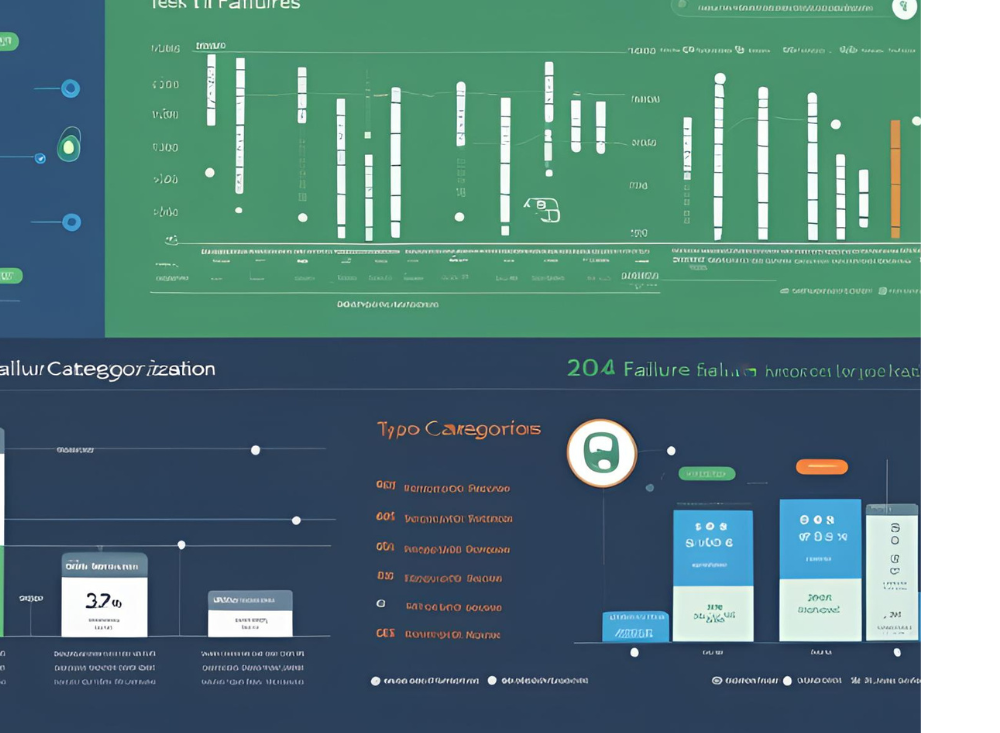
In the dynamic landscape of software development, automated testing is a cornerstone of quality assurance (QA), ensuring applications meet user expectations across diverse platforms. However, as test suites grow in complexity, identifying and resolving test failures becomes a time-consuming bottleneck. Manual triaging of failures often leads to delays, misclassifications, and inefficiencies. GenQE.ai, an AI-powered quality engineering platform, addresses this challenge with its intelligent test failure categorization capabilities, transforming how teams manage and resolve test issues. This blog explores how GenQE.ai’s innovative approach streamlines QA workflows, boosts productivity, and enhances software quality.
The Challenge of Test Failure Management
Automated testing generates a wealth of data, but not every test failure indicates a critical defect. Failures can stem from various sources: code bugs, environment issues, flaky tests, or outdated test scripts. Manually sorting through these failures requires significant time and expertise, often diverting QA teams from strategic tasks. Misclassifying failures can lead to wasted effort, delayed releases, or even undetected bugs slipping into production.
GenQE.ai tackles these challenges head-on by leveraging artificial intelligence to categorize test failures intelligently, enabling teams to focus on resolving critical issues and accelerating delivery cycles.
GenQE.ai: AI-Powered Test Failure Categorization
GenQE.ai is a cutting-edge platform that integrates advanced large language models (LLMs) and AI-driven automation to enhance QA processes. Its intelligent test failure categorization feature uses AI to analyze test results, identify root causes, and group failures into actionable categories, making it easier for teams to prioritize and resolve issues. By seamlessly integrating with tools like Jira, Git, and CI/CD pipelines, GenQE.ai ensures that failure categorization fits effortlessly into existing workflows.
How GenQE.ai’s Intelligent Categorization Works
GenQE.ai’s AI-driven approach to test failure categorization is both sophisticated and intuitive. Here’s how it transforms the process:
- Automated Failure Analysis: GenQE.ai ingests test logs, stack traces, and error messages from automated test runs. Its AI engine analyzes these artifacts to identify patterns and root causes, such as UI rendering issues, API failures, or environment misconfigurations.
- Context-Aware Categorization: The platform categorizes failures into meaningful groups, such as “Code Defects,” “Flaky Tests,” “Environment Issues,” or “Test Script Errors.” This is achieved by correlating failure data with contextual information from the codebase, test history, and recent changes.
- Prioritization and Recommendations: GenQE.ai assigns severity levels to categorized failures based on their impact and frequency. It also provides actionable recommendations, such as updating test scripts, adjusting environment settings, or assigning bugs to specific developers.
- Continuous Learning: The AI models in GenQE.ai learn from past categorizations and developer feedback, improving accuracy over time. This ensures that the platform adapts to project-specific patterns and reduces false positives.
Key Features of GenQE.ai’s Categorization
- Integration with CI/CD: GenQE.ai seamlessly connects with CI/CD pipelines, automatically categorizing failures from test runs in tools like Jenkins or GitHub Actions.
- Real-Time Insights: Teams receive instant notifications of categorized failures, with detailed reports accessible via GenQE.ai’s dashboard or integrated tools like Jira.
- Customizable Categories: Teams can define custom failure categories tailored to their project needs, ensuring flexibility and relevance.
- Cross-Platform Support: GenQE.ai supports failure categorization for web, mobile, and client-server applications, ensuring comprehensive coverage across diverse testing scenarios.
Benefits of GenQE.ai’s Intelligent Categorization
By automating and enhancing test failure categorization, GenQE.ai delivers significant advantages for QA teams:
- Accelerated Triage Process: AI-driven categorization reduces manual triaging time by up to 70%, enabling faster identification and resolution of critical issues.
- Improved Accuracy: GenQE.ai’s AI models minimize misclassifications, ensuring that teams focus on genuine defects rather than chasing false positives or flaky tests.
- Enhanced Productivity: Automated categorization and actionable recommendations free QA engineers to focus on high-value tasks like test strategy and optimization.
- Seamless Collaboration: Integration with Jira and Git streamlines communication between QA, development, and DevOps teams, reducing defect resolution time.
- Higher Software Quality: By quickly identifying and prioritizing critical failures, GenQE.ai ensures that bugs are addressed before they reach production, enhancing user satisfaction.
Real-World Impact: A Case Study
Consider Innovatech, a software company developing a cross-platform e-commerce application. Their QA team faced challenges managing thousands of automated test failures across daily builds, with manual triaging taking hours and delaying releases. After adopting GenQE.ai’s intelligent test failure categorization:
- 60% Faster Triage: GenQE.ai automatically categorized failures, reducing triage time from hours to minutes.
- 90% Reduction in False Positives: AI-driven analysis distinguished flaky tests from genuine defects, improving testing efficiency.
- Streamlined Collaboration: Integration with Jira allowed Innovatech’s QA team to assign categorized failures directly to developers, cutting defect resolution time by 50%.
As a result, Innovatech accelerated its release cycles and delivered a more reliable application, boosting customer trust and retention.
Getting Started with GenQE.ai
Ready to streamline your test failure management? GenQE.ai makes it easy to integrate intelligent categorization into your QA workflows. Here’s how to get started:
- Create an Account: Sign up for a free trial at genqe.ai to explore the platform’s capabilities.
- Integrate with Your Tools: Connect GenQE.ai to your CI/CD pipeline, Jira, and Git repository for seamless data flow.
- Configure Categorization Rules: Customize failure categories and severity levels to align with your project’s needs.
- Run and Analyze Tests: Execute automated tests and let GenQE.ai categorize failures, with real-time insights available on the dashboard.
- Optimize and Scale: Use AI-driven recommendations to resolve issues and refine your testing strategy over time.
Conclusion
GenQE.ai’s intelligent test failure categorization is a game-changer for modern QA teams. By leveraging AI to automate failure analysis, categorization, and prioritization, the platform eliminates the inefficiencies of manual triaging, accelerates release cycles, and ensures superior software quality. Whether you’re managing complex test suites or aiming to enhance cross-team collaboration, GenQE.ai empowers you to achieve QA excellence with ease.
Visit genqe.ai today to discover how intelligent test failure categorization can transform your quality engineering workflows in 2025!